False Machine (1)
By:
June 15, 2015
The following post originally appeared at Patrick Stuart’s blog False Machine. It is one in a series of 10 analyzing the mini (miniature figure, used in wargames) and other small-scale fantasy and sci-fi models as an art form.
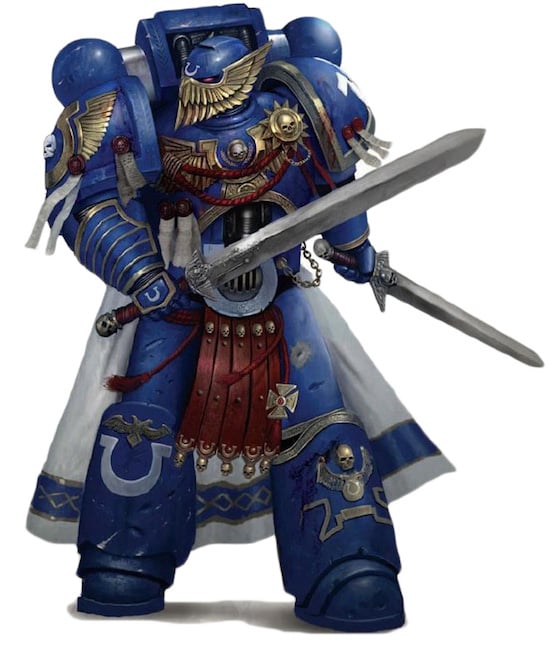
Completely enclosed in the hollow of his hand
He must strive continually to think of, and use, form in its full spatial completeness. He gets the solid shape, as it were, inside his head — he thinks of it, whatever its size, as if he were holding it completely enclosed in the hollow of his hand. He mentally visualises a complex form from all round itself; he knows while he looks at one side what the other side is like; he identifies himself with its centre of gravity, its mass, its weight; he realises its volume, as the space that the shape displaces in the air. — Henry Moore, ‘Notes on Sculpture’ — in Herbert Read’s Henry Moore, Sculpture and Drawings
There is popular music and popular cinema and there is actually popular sculpture. Much of it is what we would usually call ornaments. Some of it is minis — i.e., miniatures. Minis are sculpture for the masses in the same way as pop is music for the masses. (If you are trying to explain this to someone suspicious with an arts degree you can call them Kleinplastik, which means almost the same thing but is German and therefore a valid intellectual construct.)
It is a kind of invisible art.
Constraints shape thought. The mind is a little like water. Any particular thought will usually choose the path of least resistance to its assumed end. Total freedom often leads to general blandness. See the melange of modern fantasy.
When constraints are introduced. (I think of them as patterns of activation rather than constraints.) The thought is displaced from its track. Like a river being dammed. It must find a new route through usually untouched pastures of the mind and make unusual connections to be what it needs to be.
The most powerful and creatively interesting constraints are those of different kinds. If a Dungeons & Dragons character has to be a cleric but cannot worship any stated god in a D&D book, that brings two constraints from within a very similar field. [Dungeons & Dragons is a game developed by Gary Gygax and Dave Arenson in 1974 in which the players of the game assume the role of characters.] If the cleric has to be created in five minutes because a train was late, that introduces a constraint from a different level. If it needs to fit into the poetic formation of a sonnet, that is another, if it needs to be generated from a memory of your real life then this is another. Constraints combined and imposed from different levels of reality are the most powerful.
I have been thinking about the overlapping constraints under which big companies make popular sculpture and they fascinate me.
The Fiction
Every mini is linked to and feeds back into an overarching fiction, so each mini must encapsulate and even move forward a bit of the story. It has to have continuity with what came before.
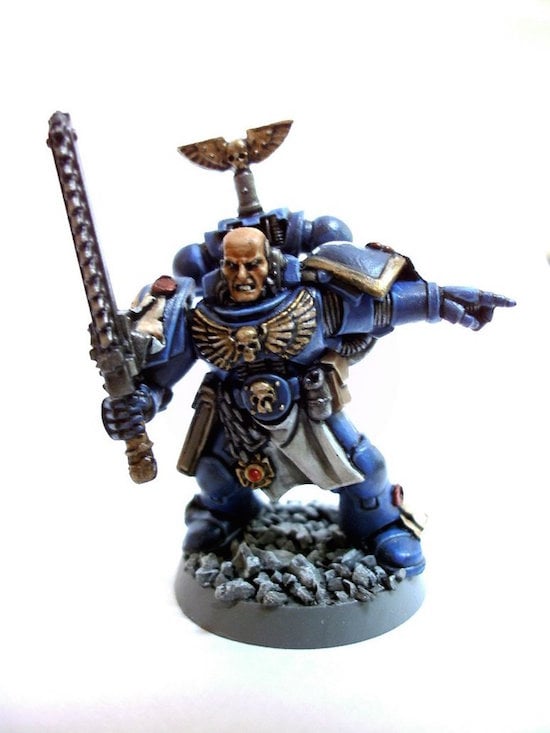
One of my favourite things about 40k lore is the backward technology. [Note: Warhammer 40,000 is a war-game, set in a gothic future, developed by the Games Workshop company in 1987. It is noted for the deep artistic richness of its background and the unusual innovation and beauty of its designs, influenced strongly by artist John Blanche and Artist/Designer Jess Goodwin.] In the 40k ’verse older technology is always better — and most of it is lost. R&D is forbidden. To make something better you have to actually find an archive and mine it for already existing designs. This makes sense of the insane tech levels in 40k, especially in human culture. Old and new, recently discovered and long forgotten all mixed together almost incoherently. If game designers want to invent something new they just have something old discovered. This means designers get to invent what they want, so long as it makes artistic sense. It feeds back into the power of the fiction because everything is old and decayed and no-one understands it.
Stories need inherent technology to talk about the future so that we understand it now. Star Trek has post-relativistic speeds, gravity control, matter reorganisation, and AI. A society with those things would look and act like nothing we can recognise. So the tech is used but the implications are ignored.
40k gets around this by inventing an incoherent culture. Its brokenness adds emotional and aesthetic power rather than taking it.
Capital
If it’s made by a major corporation then it will be affected by what the market wants. Space Marine models outnumber other human models because everyone wants to play Space Marines. [Toy hypermasculine future-warriors. This single design probably makes up around half the profits that Games Workshop receives from its 40k universe. The 40k universe makes up around half the profits GW makes in total. Therefore the design of this single model may make up as much as a quarter of the wealth of a major international company. It’s possible this is one of the most successful sculptures of all time.] The company semi-accidently hit something that jams right in to the adolescent male mind. It does so in an interesting way. It’s like a pop hit of popular sculpture. (If we look back at the fiction constraint, everything developed by the company for this setting needs to live inside a universe that justifies the existence of Space Marines. In the same way, everything developed for the Star Wars universe needs to live inside a universe that can justify Jedi Knights and star fighters.)
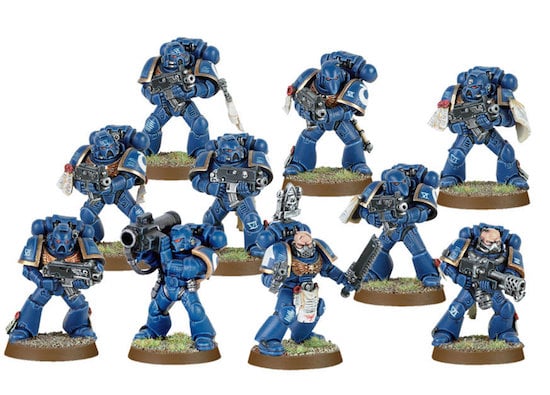
It will be affected by what the company thinks it can persuade people to want and by what makes the most money. The company has worked out it has a higher profit margin on very large very expensive kits. Now every army has one. (This means that in the fiction of the game, every imagined culture suddenly has access to unique giant robots that they are assumed to have always had, but that they just didn’t mention until now.)
In terms of sculpture, the Games Workshop mega-kit provides an entirely new aesthetic territory to work on. A small figure of a hero has the main job of persuading you that a very tiny thing can represent a very powerful or potent personality or being. A lot of what very small minis do is shape their form to persuade you that they are larger and have more mass, both more physical and more dramatic weight, than they actually have.
A very large figure is trying to be beautiful or interesting in a different way. It has real size, real mass, and space for enormous amounts of detail. A big part of its job is organising the arrangement of its detail and surfaces in a way that seems both pleasing and correct for its scale. Another job it has it to relate its enormous size to the imagined world whose active participants are usually represented by much smaller things. It must feel as if it can meaningfully interact with these tiny things, as if it represents something made by the same culture and belongs to the same world.
Production and Materials
A mini needs to be mass-produced. The materials and the techniques change.
A pre-industrial game piece would probably have been made by some form of carving. This means that every surface is defined by a tool wielded by a human hand. Every surface is directly accessible to the outside and, since it will almost certainly be held a number of different ways during its production, then the finished piece is likely to provide contact surfaces to allow for this manipulation. The figure is almost certainly produced ‘as-one’ from a single block of material.
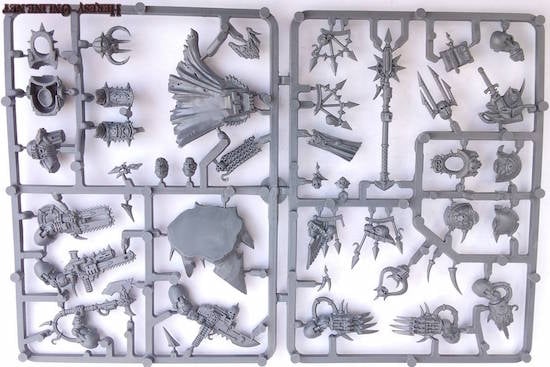
Mass production, so far, involves a mould. A mould means hot metal or plastic flowing into a complex three-dimensional space in a liquid state, then cooling and hardening. All mould-produced forms are dependent for their nature on the qualities of liquid, and what liquid can be persuaded to do in different circumstances.
Generally you are trying to fake a figure that occupies three dimensional space with a technology that wants to make rounded blobs. Molten pewter doesn’t want to make a nice long sword-like shape so you make the sword part of the mould the final tributary of the river of molten pewter as it flows out of the cast. This means the sword or spear must be held away from the main body, projecting out, reaching the furthest point of the model away from its central mass.
Since liquid doesn’t like flowing in two directions at right angles, you will probably want any projecting part of the figure to go along the central axis of its mass.
These constraints define exactly how imaginary heroes stand in an imaginary world. The way minis pose, and the suggested interactions when they are imagined fighting with each other are governed, in part, by the limitations of the means used to produce them en-masse.
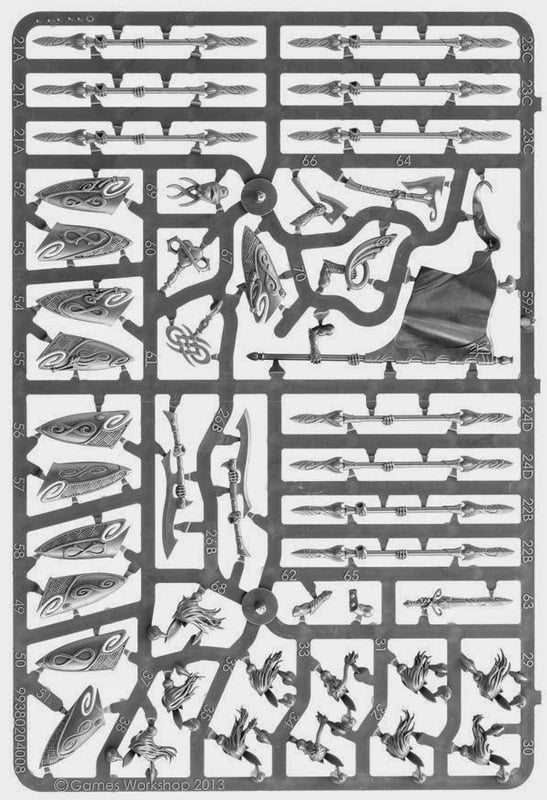
Old models were usually arranged across a single axis. Later, they were made as a series of moulded parts, the parts get snipped off the sprue [the plastic armature which branches around the specifically shaped parts of a plastic moulded figure] and attached to each other so the resulting figure occupies 3d space in a more complex way. Computers can scan in complex shapes for mass production. But still, the total mass of a figure and the way it holds together depends on which bits of polymer plastic you can get to stick to other bits in a stable way. Some designs are famous for their instability and the ease with which they break, and are less popular as a result, which means these characters and beings are imagined less frequently because the model that depicts them is unstable.
Lead holds detail differently to pewter which holds it differently to plastic which holds it differently to finecast resin. Metals are heavy and need special glues to make them stick so it’s hard to build big multipart models without special skills. Plastic bends under heat and glues easily, so that affects things for the consumer.
(Some of what we think of as an ancient style of sculpture is based on how granite carries detail. Granite is a hard rock. It survives when others wear. It’s hard to cut so you have to use simple bold designs. Those designs last so they become symbolic of time. The material affects the form which affects the culture.)
Architects of old large buildings would shift the level of detail in the building depending on its distance from the viewer. Fine detail in the distance is often bad detail because its fineness fades when seen from a long distance away. Detail on a battlefield might work in the same way.
Currently CAD-influenced [Computer Assisted Design] plastic-injection moulding is in a kind of race with 3D printing. Injection moulding has the advantage in detail, speed and ease of production. 3D printing has a mild advantage in building interiorly complex three-dimensional spaces.
Its not clear what will happen in this context. Perhaps 3D printing is like the computer, a technology which at first seems to have only a narrowly specialist use, but eventually becomes ubiquitous. However, there are those who question exactly what you can do with 3D printing that you can’t do cheaper and faster with plastic injection.
Usage
This is where popular sculpture is really different to any other kind of art. The guy who designed Space Marines gave them that unusual highly distinctive upper body profile because the player is always looking down on them from above — and they need to pop against a mixed background. Warhammer fantasy minis need to click together next to each other on square bases as a regiment, while also forming a semi-realistic impression of something going to war.
It’s assumed that the user will and should want to alter the product. Means are designed specifically for the end user to do that. Is there any other form of art in which it is assumed that the consumer is also a minor creator?
Painting is a whole other thing. So far as I know the West hasn’t painted sculptures since Greece.
Except we do.
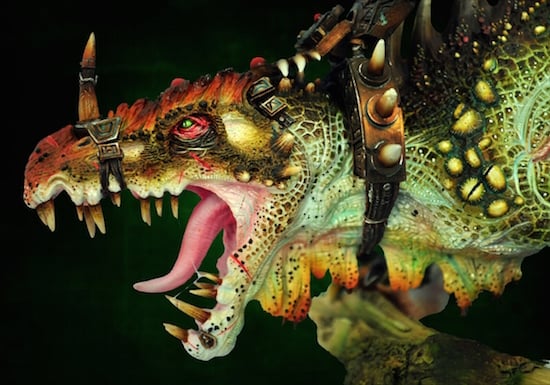
Art has movements and markets and the mind of the sculptor but it doesn’t have a universe to draw from and account for. And its product, by its nature, must be narrow in supply. It’s made to be owned. But we are surrounded by examples of a strange, popular artform that works mainly by its own rules. You can go and buy some remarkable forms right now, the creators of which assume you may alter and adapt them to your will. You are invited to do so. You are invited to use the art — to hold it in the palm of your hand.
CURATED SERIES at HILOBROW: UNBORED CANON by Josh Glenn | CARPE PHALLUM by Patrick Cates | MS. K by Heather Kasunick | HERE BE MONSTERS by Mister Reusch | DOWNTOWNE by Bradley Peterson | #FX by Michael Lewy | PINNED PANELS by Zack Smith | TANK UP by Tony Leone | OUTBOUND TO MONTEVIDEO by Mimi Lipson | TAKING LIBERTIES by Douglas Wolk | STERANKOISMS by Douglas Wolk | MARVEL vs. MUSEUM by Douglas Wolk | NEVER BEGIN TO SING by Damon Krukowski | WTC WTF by Douglas Wolk | COOLING OFF THE COMMOTION by Chenjerai Kumanyika | THAT’S GREAT MARVEL by Douglas Wolk | LAWS OF THE UNIVERSE by Chris Spurgeon | IMAGINARY FRIENDS by Alexandra Molotkow | UNFLOWN by Jacob Covey | ADEQUATED by Franklin Bruno | QUALITY JOE by Joe Alterio | CHICKEN LIT by Lisa Jane Persky | PINAKOTHEK by Luc Sante | ALL MY STARS by Joanne McNeil | BIGFOOT ISLAND by Michael Lewy | NOT OF THIS EARTH by Michael Lewy | ANIMAL MAGNETISM by Colin Dickey | KEEPERS by Steph Burt | AMERICA OBSCURA by Andrew Hultkrans | HEATHCLIFF, FOR WHY? by Brandi Brown | DAILY DRUMPF by Rick Pinchera | BEDROOM AIRPORT by “Parson Edwards” | INTO THE VOID by Charlie Jane Anders | WE REABSORB & ENLIVEN by Matthew Battles | BRAINIAC by Joshua Glenn | COMICALLY VINTAGE by Comically Vintage | BLDGBLOG by Geoff Manaugh | WINDS OF MAGIC by James Parker | MUSEUM OF FEMORIBILIA by Lynn Peril | ROBOTS + MONSTERS by Joe Alterio | MONSTOBER by Rick Pinchera | POP WITH A SHOTGUN by Devin McKinney | FEEDBACK by Joshua Glenn | 4CP FTW by John Hilgart | ANNOTATED GIF by Kerry Callen | FANCHILD by Adam McGovern | BOOKFUTURISM by James Bridle | NOMADBROW by Erik Davis | SCREEN TIME by Jacob Mikanowski | FALSE MACHINE by Patrick Stuart | 12 DAYS OF SIGNIFICANCE | 12 MORE DAYS OF SIGNIFICANCE | 12 DAYS OF SIGNIFICANCE (AGAIN) | ANOTHER 12 DAYS OF SIGNIFICANCE | UNBORED MANIFESTO by Joshua Glenn and Elizabeth Foy Larsen | H IS FOR HOBO by Joshua Glenn | 4CP FRIDAY by guest curators
